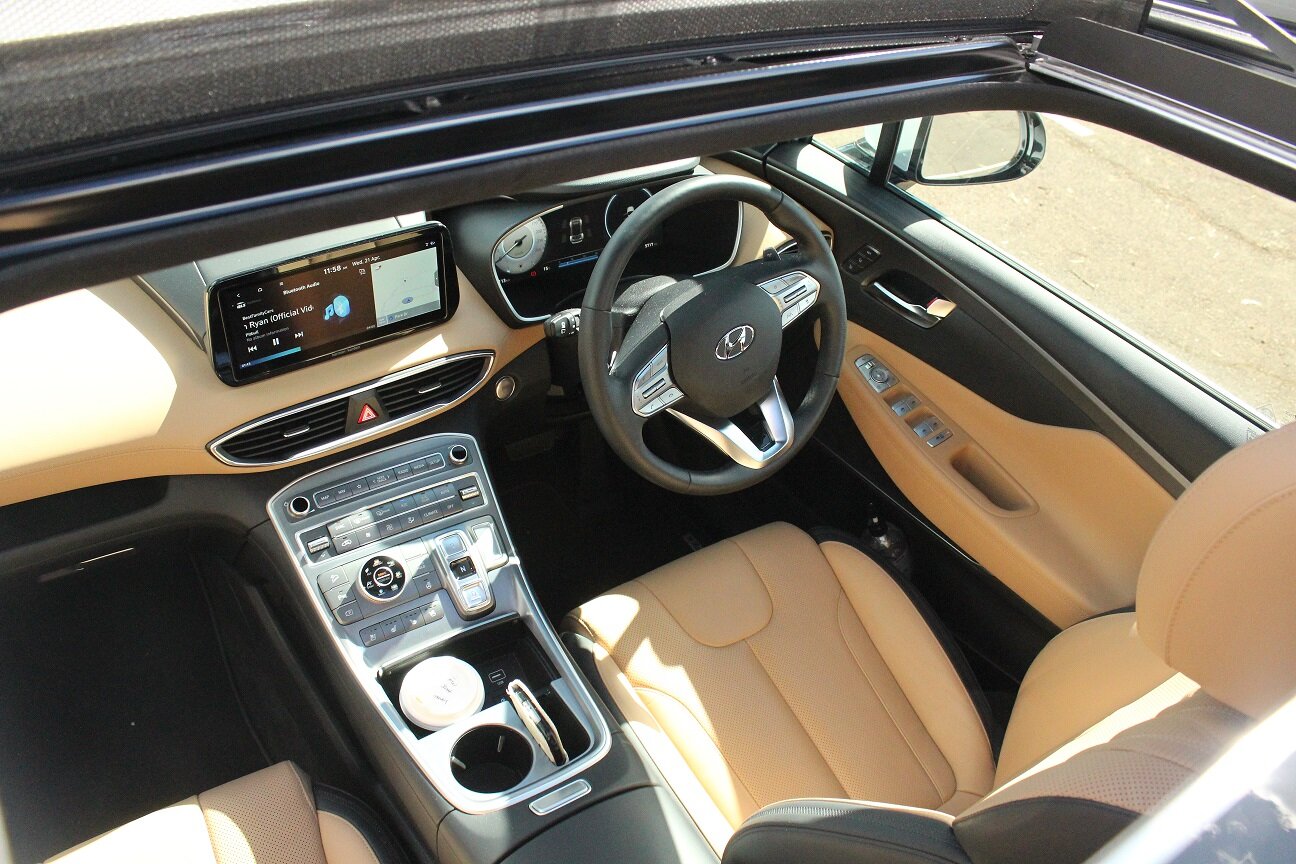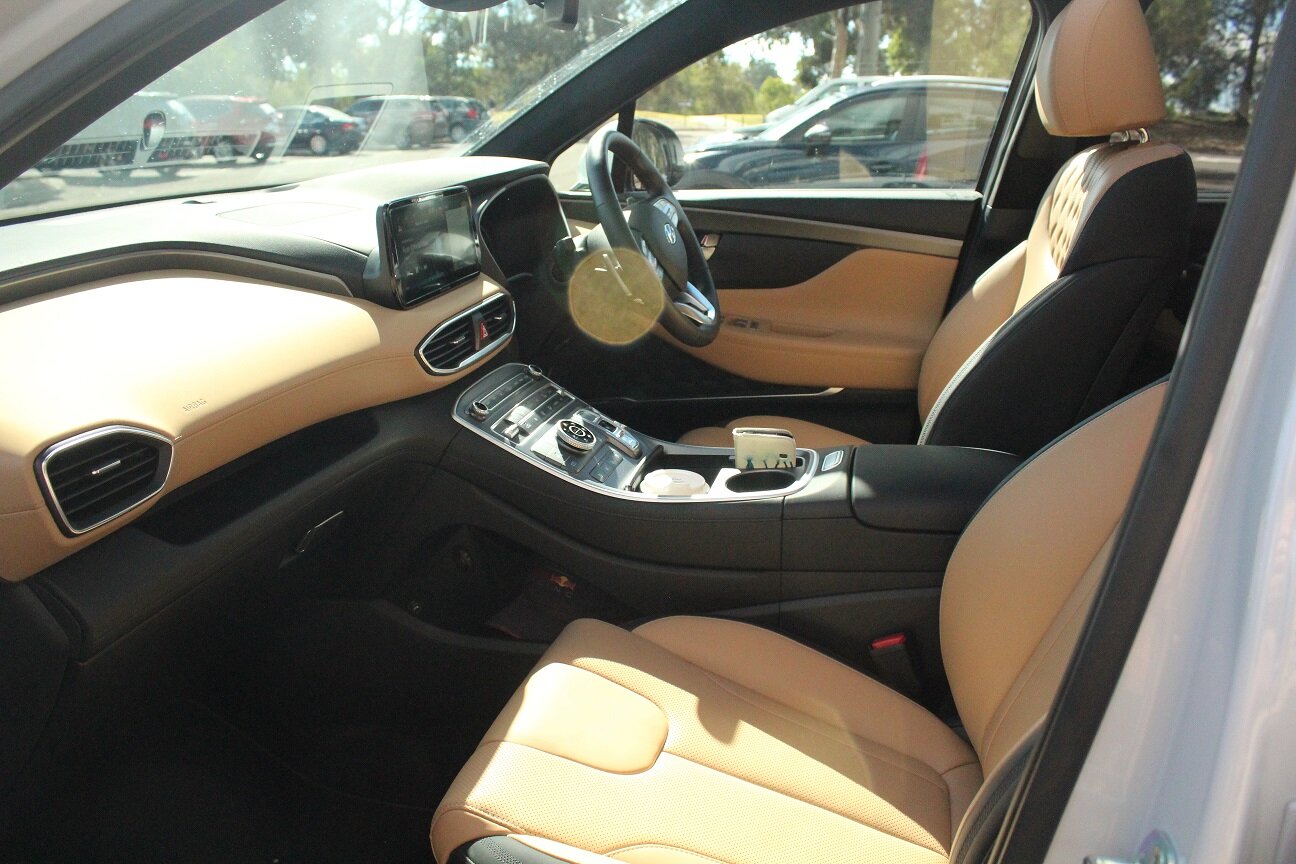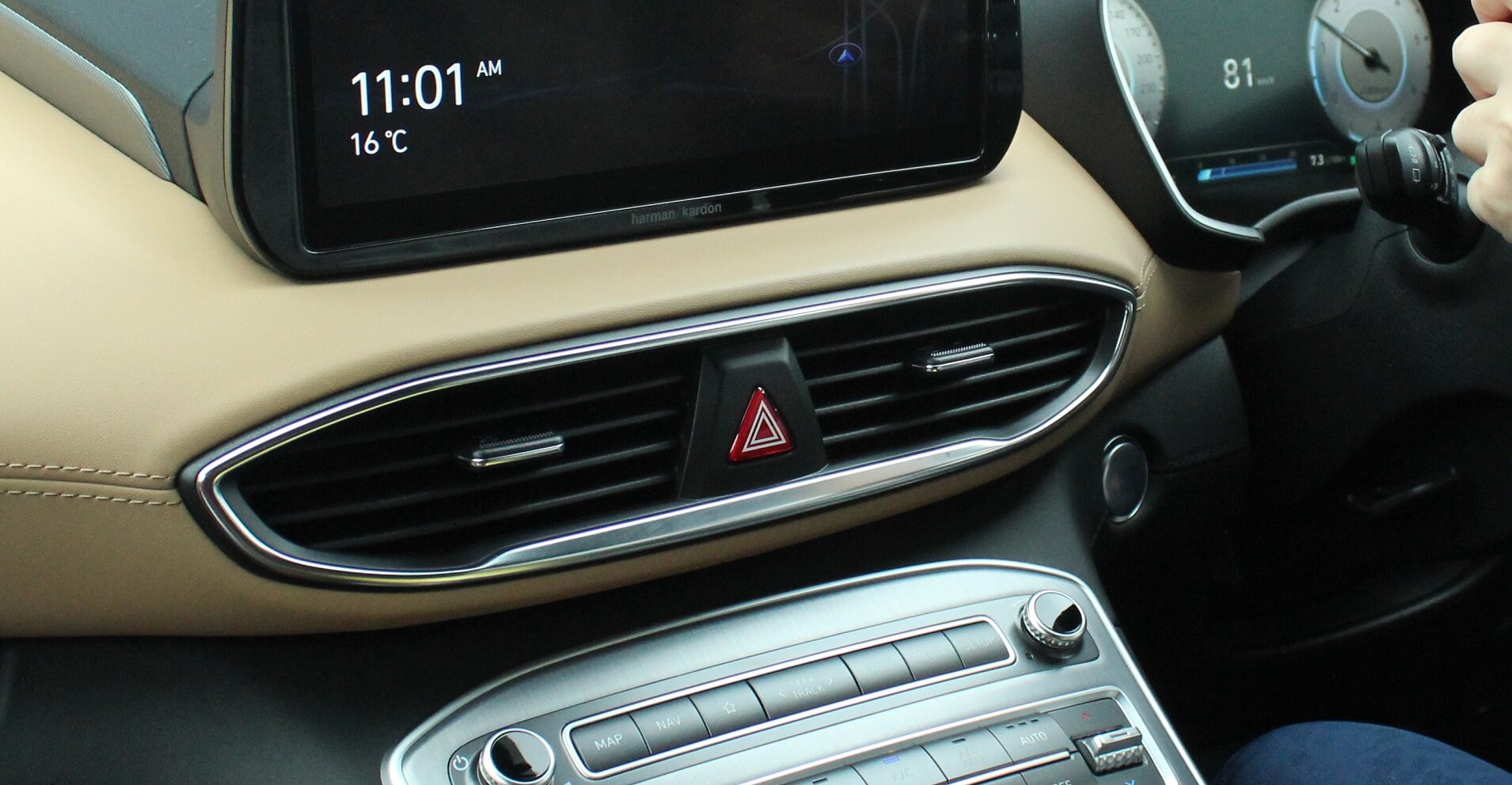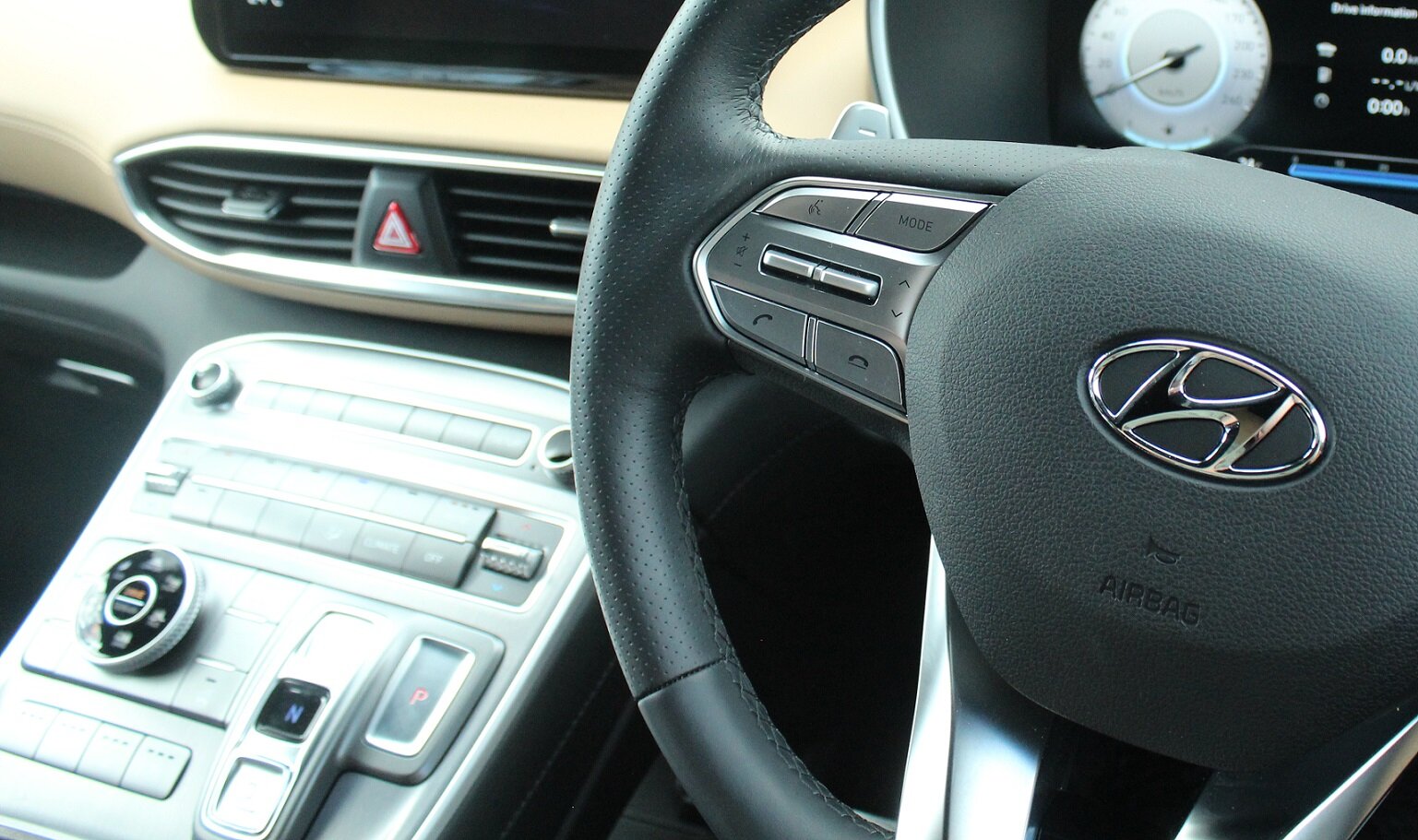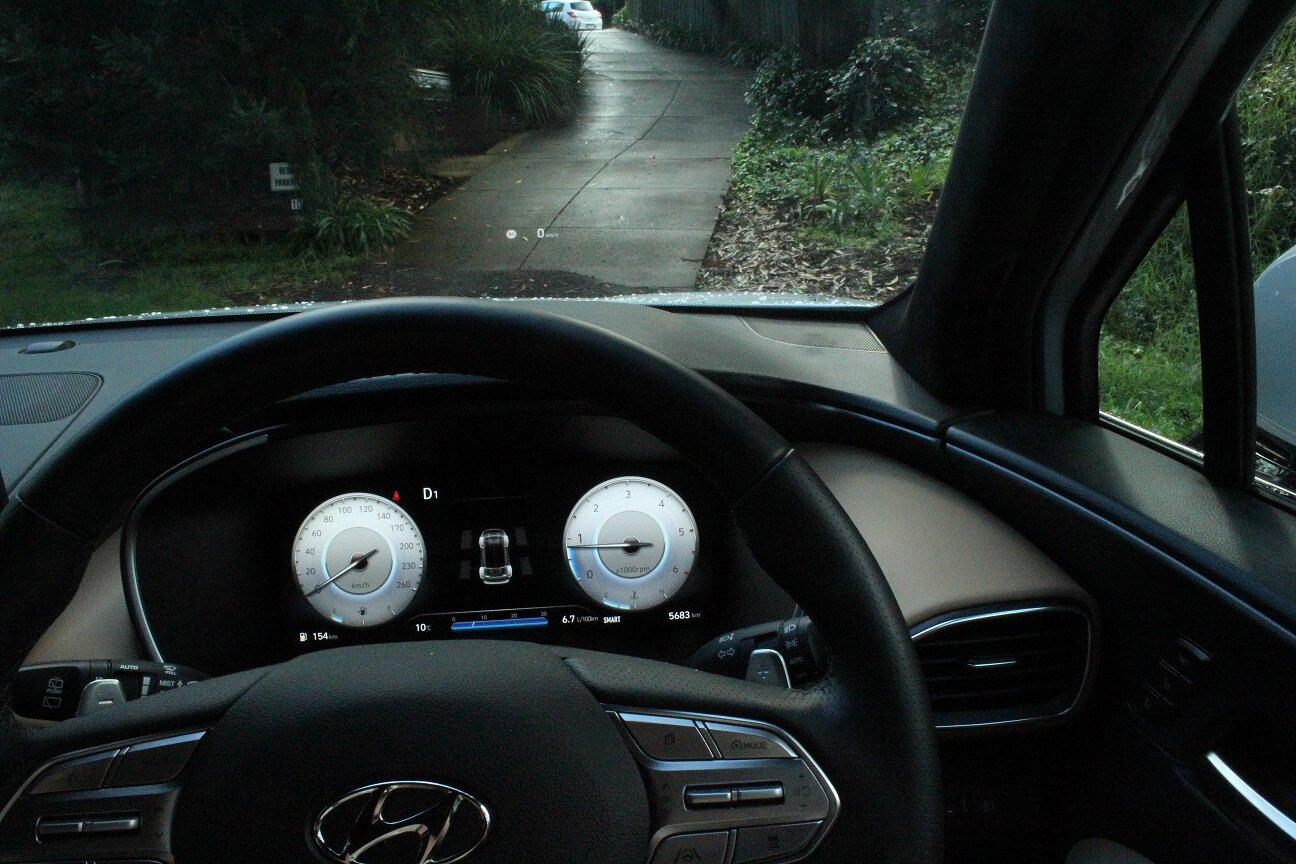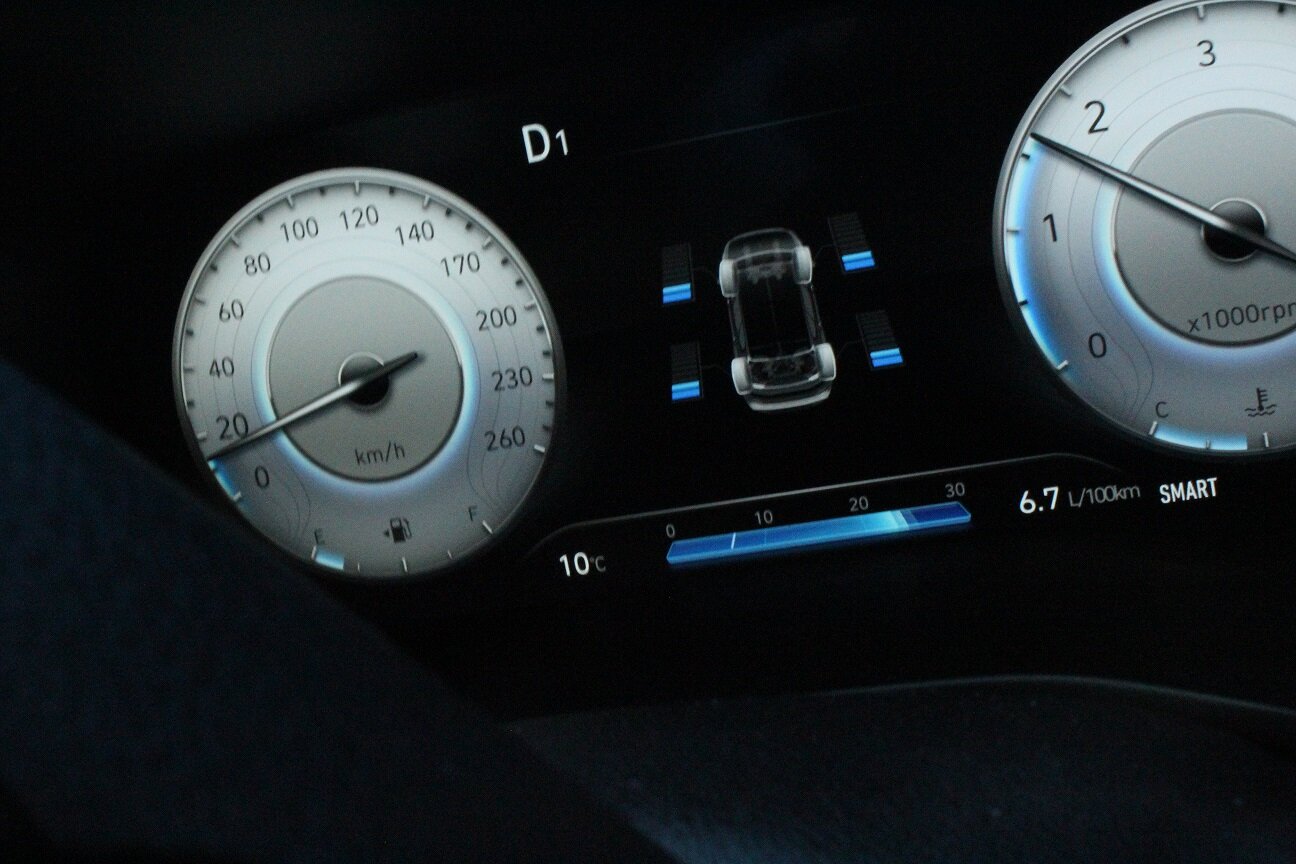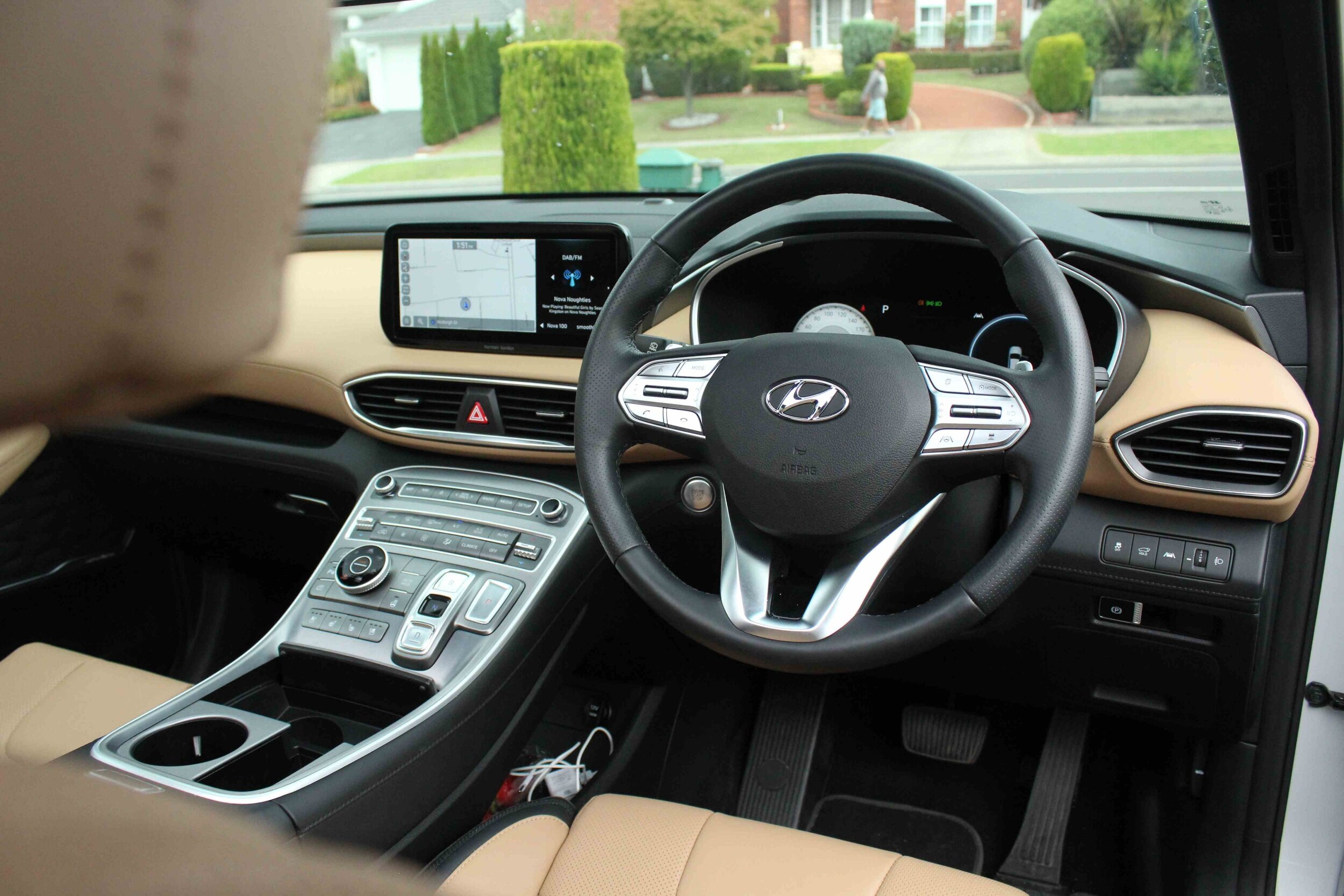Hyundai Santa Fe review and buying guide
If you need a large, 7-seat SUV that can tow, transport and turn heads, the Hyundai Santa Fe is an SUV large on luxury but not on price
The seven-seat SUV is such a versatile device for moving you and your kids around in safety and comfort.
But they cannot do everything, and I'll explain to you how the new Hyundai Santa Fe, arguably, one of the best in the market, is not only brilliant in many ways relevant to you, but also has limits.
You need to know those limitations and the benefits inherent in buying the new Hyundai Santa Fe if you're going to consider putting you and yours in one.
For transparency, I drove the new Hyundai Santa Fe Highlander for a week courtesy of Hyundai Australia and frankly, it was rather revelatory.
I remember many, many years ago growing up when Ford and Holden were the pinnacle of automotive culture, affordable luxury and accessible performance matched by functionality and family-friendly practicality, all rolled into one awesome looking car.
Gee, those were the days.
Fast forward to today. Things are very, very different. And immeasurably better in so many ways.
For starters, Santa Fe is remarkably comfortable with seats big enough to hold most people, but bucket-y enough to actually support you as well. There’s a key difference between the two. You’re certainly not sitting on old bench seats. Seats can be comfortable because they can hold your weight vertically, but laterally, seats can let you down by not holding your weight during cornering. But Santa Fe has very good driver support.
In a two-hour trip to Phillip Island, neither the wife nor I got out with a hint of ache or stiffness beyond any reasonable expectation for a long trip. I would certainly appreciate sitting on the Hume for nine hours to Sydney in Santa Fe (instead of something harder like a ute or 4x4 wagon (both tuned for harsher driving conditions).
Admittedly, I had the Highlander with (perforated) Nappa leather, including heating and ventilation, but I specifically recall sitting in the Sport+ Sorento in 2020 and feeling similar levels of comfort driving that thing around for moderate periods (between lockdowns).
Hyundai and Kia have certainly figured out ergonomic seating, and then some. This might seem trivial, but even in 2021 there are still seats out there which leave you scratching your head, like the last version of the Commodore which had appalling front seats - you could actually feel the seat massage rollers inside the seatback even when not operating, so it was like sitting against rocks for nine hours to Sydney. We actually did that in 2018. It was dreadful.
So high marks on cabin comfort for Santa Fe. But you need to try sitting in them for yourself, obviously, because your frame is different to mine. But I would suggest most people are going find them hard to get out of, because you’re so damn comfy, that is.
Outward vision is also pretty good. The mirrors are sufficiently big enough, when adjusted correctly of course. Although, I quite like the additional range the mirrors in current Triton and Pajero Sport offer with their inward-pointing mirror shape, which means if you’re towing a trailer you can see it when reversing and keep an eye on traffic in the far-right or left lane. Santa Fe’s mirrors are flat on the inside, so in order to watch a reversing trailer you might need to turn the left door mirror inward a touch.
While we’re on mirrors, they should be adjusted so you cannot see the vehicle down the inside, because that bad habit almost everybody has fallen into creates that so-called ‘blind spot’.
Overall Santa Fe doesn’t feel even slightly ‘too big’ to the point of poor visibility.
The window sills, door height, and rear window are all a good size and there aren’t any particularly bad spots where traffic can hide. Although you’ll wanna be extra careful when reversing out of certain places in Highlander with the retractable sunshades deployed, as is the case with any sunshades or window sox, obviously.
Legroom is quite good in the front and it’s pretty decent in the back, even for adults. And there’s ventilation all around, which is great for not letting rows 2 and 3 feel claustrophobic. But I have to voice my disapproval of the vents themselves which Hyundai has designed to be closeable using the adjustment toggle, rather than the conventional open/close slide or wheel mechanism.
This sounds petty, but it’s quite annoying when you want to move a vent away from your face, but instead you accidentally close the bloody thing without realising, simply because you slid it all the way left in a hurry because you’re trying to watch the traffic. I really hate these kinds of vents. If you live in a big metro city, you pretty much never have the vents shut, you have the air on recirculating (unless you enjoy sucking in cancer-causing particles), and you tend to have the A/C activated to regulate cabin temperature.
So why the hell would I want to shut the vent in the same action as adjusting the direction of flow? It’s illogical and stupid. If I want to close the vent, have a standalone toggle which does that.
For balance, the climate control on Santa Fe is very good, and doesn’t muck around when you need to cool down a warm cabin, or warm up a frosty one. And the recirculating function stays on when you change from A/C to fan-only, or the reverse. Thank you, Hyundai. And they haven’t stuck the air conditioning functions in the infotainment system behind sensory-deprived touchscreen buttons which take your eyes and attention off the road. You get the joy of function-over-form buttons to turn things on and off, and rocker switches for adjusting temperature (the information for which is displayed on the screen - that’s perfectly fine, we read screens when driving, we shouldn’t touch them).
There is one major gripe with the buttons and dials on the central console. Well, technically it’s two of the same problem. Readability. During the day, light can very easily reflect off the shiny, smooth buttons and panels, making the white font very hard to read (and I have perfect eyesight).
Likewise, at night, with headlights on, the centre console buttons are not backlit. The transmission buttons ‘P’, ‘R’, ‘N’, and ‘D’ are, but not the temperature, parking sensors, navigation/media or seat heating/cooling. Some buttons are lit with the in-built LED indicator light being the only illumination, but the rest of the buttons, you can’t see without fingering around on the roof for the cabin light or waiting for a flash of street light. This is a staggering design flaw which, for a vehicle that gets so much right, is one of those face-palm omissions. Like, how did your engineers not drive Santa Fe at night and notice this?
Sorento’s buttons are backlit.
And speaking of backlighting, with Sorento and Santa Fe in that you can have your headlights on during the day, like when it’s pouring or overcast - and you want to be as visible as possible to hostiles - without the dash lights dimming to reduce brightness and glare (which is only useful at night). Mitsubishis do this daytime dimming as a result of turning headlights on, and it’s annoying. You have to take the good with the bad in life, Santa Fe included.
Driving Santa Fe is absurdly easy. There’s plenty of feel and weight in the steering to tell you what’s going on when you direct it around corners, but it’s light enough to not make it hard work like in a Pajero Sport or Triton with chunky all-terrain tyres and heavier steering tune.
The Santa Fe’s suspension is a nice balance between softer comfort over crackly, bumpy city bitumen, but doesn’t crash over speed humps.
Hyundai/Kia’s 2.2 diesel is a benchmark powertrain; ideal for moderate towing or big families with lots of stuff going long-distance.
Acceleration from the 2.2 diesel is not what you’d expect, mostly because it’s so good. It’s not quite as punchy immediately off the line as the 3.8 petrol V6 (like in Palisade) or the 3.5 petrol V6 as the other powertrain available in Santa Fe, but as soon as you touch the diesel's 1750 RPM powerband, you get more than enough power to shoot you forward. There’s 148kW of peak power available at 3800 revs in the diesel, and 200kW peak power from the V6 but at a much higher 6400 RPM. So while you might spring forward in the first 20 metres with the V6, the diesel will catapult you for the remaining head-to-head drag race you might imagine having with the petrol (front-wheel drive only) Santa Fe. In your dreams, perhaps.
The diesel is all-wheel drive, and it’s quite an engaged and active system which, in adverse conditions like rain or dirt (or wet dirt), is a huge advantage because it doesn’t wait for you to be in a tricky spot (generating wheelspin like in an on-demand system) before splitting the power and reducing the likelihood of traction loss. It’s almost always doing something, which is excellent, almost to the point of Subaru's symmetrical AWD.
I noticed driving around the morning after heavy rain, where the roads were still quite damp and cold, and in hilly suburbs, the front wheels were getting between 20 and 40 per cent of the power sent to them, while the rear wheels remained the primary working pair. If you live in an especially steep street, or perhaps in an undeveloped area with silty mud, leaves and crap littering the roads, especially when it rains, this is a big tick for you.
Same goes if you’re a regular attendee to snow fields, or even if you live in a regional town down a sometimes muddy driveway (but which doesn’t warrant a hardcore off-roader, then a Santa Fe or Palisade, or even Kia Sorento could be a really smart way to buy the right sized vehicle with appropriate drivetrain, without overspending on a 4x4 warrior which will only ever use 10 per cent of its engineered potential capacity.
You might also consider a Subaru Outback or Forester for the same reason.
There’s an eight-speed dual-clutch transmission the only one available with the diesel, and an eight-speed epicylic auto with torque converter with the V6. Both work quite well with their respective powertrains, but the DCT is undoubtedly the star of the show.
Transmissions: Which one works for your driving?_
It’s essentially two smaller gearsets with a clutch for each. Each clutch prepares the next gear in advance, ready to simply switch clutches at the precise moment. Very slick, lightning fast, and really efficient, saving around 10 per cent in fuel where a conventional automatic will build the revs, hit peak power then change gear and losing peak power again.
This might not be very exciting if you and yours don’t really give a rats arse about the mechanical underpinnings of your new car, but you should try to at least be familiar with the terms and how it works, even if vaguely. I’m certainly no mechanical engineer, but I understand the principle behind it and how it works.
Hyundai/Kia’s DCT is a really nice thing to use. It’s remarkably smooth and very hard to determine the exact point the gears change, which is the sign of a very well designed dual-clutch transmission. And it’s proven very reliable and perfectly happy with towing or full payloads.
I do especially like the rotary transmission switch on the Kia Sorento, as opposed to the push-button arrangement on the Santa Fe which takes just a little more thought when you need to change direction quickly. But it’s still pretty quick when you get it right. And it beats the hell out of going from ‘D’ to ‘R’ in a hurry to hurriedly back up your driveway (before oncoming traffic ploughs into you) and accidentally pushing the old lever too far forward and nudging ‘Park’ and suddenly stopping in the middle of the road. That problem is gone thanks to the Santa Fe’s DCT.
No creeping forward in traffic. Just stay stopped. Then drive forward when there’s space. Then stop again. Simple.
But you have to make sure not to creep forward in heavy traffic with the DCT. Inching forward, when you can just remain stationary until you can move forward a substantial distance (before stopping again) will reduce the premature wear of the clutch at very slow speeds. The conventional epicyclic automatic will be better for this kinds of heavy, stop-start traffic for hours, twice a day, every single day of the week for the next five years.
Same goes for the petrol versus the diesel. The 2.2 diesel is seriously efficient on fuel, but you won’t gain all that much by spending more to have it if your Santa Fe lives in peak hour traffic. And you’ll wear out the clutch in the DCT quickly if you can’t change the bad habit of creeping forward at 3km/h through the CBD.
Diesels also require routine highway driving for the sake of keeping all its mechanical systems healthy. Hyundai and Kia’s diesels are regarded as one of the best in the market for reliability, but they still need to be cared for, like any engine and transmission, and exhaust system.
See, there’s a DPF exhaust system on the 2.2 diesel, which while reliable and good at self-regenerating, it is good practice to be doing fairly regular (once or twice a fortnight at least) highway driving at 80-100km/h. This allows the DPF system to get hot enough to burn off the nasty sooty particles captured by the exhaust.
This same highway driving will reduce oil dilution in the engine and its other more technical systems. Ditto any new modern petrol engine; it’s good to do a fairly long-ish drive on them somewhat regularly.
Kia Sorento Review: This seven seat SUV has game_
Nissan Patrol Review: ‘Want’ vs ‘Need’ in a seven-seat 4X4 wagon_
Mitsubishi Pajero Sport Review: Not a LandCruiser and that’s okay_
Mitsubishi Outlander and Hybrid Review_
Hyundai Palisade Review: Big, eight-seat SUVs don't glide_
Kia Carnival: More SUV than people mover only where it counts_
Backtracking
We have to learn to live with touchscreens in cars, and less-important features tucked behind sub-menus.
So, once you’ve set your Santa Fe up the way you like it, it’s pretty easy to get familiar with where things are. It’s like organising the apps and home screen on your new smartphone, which I did recently, with remarkable efficiency, I might add.
Santa Fe’s reversing and 360 degree camera system is a good/bad news story.
At night the 360 degree camera needs third party lights to be functional down the sides of the vehicle, but forward and reverse are good enough.
It’s quite clear during daylight in terms of resolution, but the stitching together of frontal and side images is sometimes blurry or just downright unhelpful, especially given that the ‘seam’ where the rear view and the side view come together is at the corner. The rear corners are the exact area you need the utmost clarity.
This is an area of future improvement for many new cars (including Mazda CX-9), so don’t scrub an otherwise very good Santa Fe off your list for this. The image stiching issue is only worst on highly complex terrain being displayed through the camera, such as my sloped, walled and semi-blind driveway, although I suppose this is where you most want such a camera system to assist you, which it does. I just had to go slowly and not presume the coast was clear.
Just get in the habit, as you should be anyway, of double checking in your mirrors and not relying solely on the camera. 360 degree camera systems are excellent for lining up perfectly in parking spaces and you an do that in Highlander.
The dynamic guidelines are intuitive and don’t obscure the actual area you’re trying to see, which is nice. But there is a little bit of fish-eye lens distortion going on too, but it’s not as bad as my Subaru Outback.
It’s important to remember the camera and sensors are there as support, but not to supplement using your eyes.
One nuance you’re gonna have to make friends with, or at least tolerate, is the blind spot monitoring system in Santa Fe.
If you’re turning right from the left of two turning lanes, with your indicator on, and a car beside you, the system will warn you (because it thinks) you’re about to merge into that vehicle parallel to you.
None of these systems are perfect, so just get used to knowing what’s beside you in these situations and ignore the beeps when you already know what’s going on.
A big benefit of going with the higher spec Santa Fe is the digital driver's dash. It’s really clear and easy to see and use.
In some rare lighting situations you might get a little glare, but it’s negligible and happens on every car.
Backpacking
Let's talk about the interior space in SF.
For routine running around, with your two kids and getting to/from work, and even those all too infrequent weekends away, it's quite ideal, with a good balance of ample legroom, shoulder room and headroom to spare. But it's also cosy enough and restrained enough to not become like the hulking beast that is SF's bigger sister, the Palisade. (That's not a criticism, it's a compliment.) Santa Fe feels like a snug, tailored fit with room to flex shoulders, where Palisade feels more like a big American style pick-up truck on the inside, with both mum and dad’s elbows able to sit on the centre console lid armrest.
I actually had the opportunity to test all three rows with luggage as they are designed to be used, for occasions. But this test wasn't intended to be as pushing of the Santa Fe's limits as it was.
We were supposed to take five (myself included) to Phillip Island for a weekend. Easy peasey. "Try harder next time," SF would've said to me.
Except we also had the dog with us, and then my father in law enlightened us that he was coming too.
Thank Geezuz we didn't take the Outback…
Sadly, the dog had to be left at Nanna's house with everybody having stuff at their feet (bar driver, obviously) and the strictly limited boot space behind row 3 completely full. In fact, even seating position #6 of 7 had stuff on it.
In Palisade, this wouldn't have been as hard a task. But you have to ask yourself how often these kinds of situations are going happen for you, and having assessed that, you need to decide if you want to always have ample space available for those moments, or if you're okay with things getting tight and squishy for the sake of not paying more for such a bigger vehicle.
I would be okay with things getting a bit cramped on the odd occasion row 3 gets used in Santa Fe, for the sake of saving a big chunk of money. But I only have one kid so far. If I had two in school, with a third on the way, I’d be having other ideas involving a Palisade or Kia Carnival (annual salary permitting). But for 90 per cent of my family’s usage, I’d reckon Santa Fe would be okay. Or Sorento.
One last mention is the boot carpet, which needs stowing somewhere, preferably under the floor cover, when deploying row 3.
You get a full-size spare wheel in Santa Fe, as with Palisade and Sorento. Highlander and Elite get 20-inch wheels, albeit with unique designs, the Active gets 18-inch alloys and 17s are on the base model.
The powered tailgate on Highlander and Elite is pretty quick, which is nice, and so too is is the fact water doesn’t drip off the tailgate into the boot area. Nor does water splash on the lights when you open the tailgate, unlike Mazda CX-9 which has a perfectly flat area for water to bounce inside onto the carpet or your dry things.
Lap of Lux
Attainable luxury is SF Highlander at its core.
The two-tone leather is quite sexy and the thick black carpets are plush. It’s certainly a nice retreat from the world of plastic toys and dried foodstuffs-upon-cotton.
Having heated and cooled (ventilated) front seats is a massive win for mum and dad compared with the new Subaru Outback which still doesn’t offer cooled seats. Yet Subaru wants you to drive around this hot, dry country in it. I’d prefer the Santa Fe in that regard.
The headlight design is pretty cool. I love how the daytime running lights, flow from the top eye down to the bottom set of fog lamps, low beam and high beam. Clever.
And that grille is quite elaborate, too.
The Harmon Kardon premium sound system is a banger, and completely erodes the need to instal anything aftermarket or enhance anything.
The 10-speaker system is quite the entertainment factory; fortunately, the previous motoring journo who borrowed the car was evidently too keen on the doof-doof and had the base up far too high, which was a good opportunity for me to find out how relatively easy it is to interface with the equalizer and bring it down to civilised levels without too much driver distraction.
You can alter which side of the 60/40 screen split displays your preferred graphics, be it the clock, nav, media or vehicle systems, and you can kinda access the main features relatively easily without spending too much time distracted.
Don’t get me wrong, it has issues, such as the home button being on the far left despite the driver being on the right. And I found myself a little confused which menu to access for some features, but that might just be me, and you would come to learn what things are where when it’s yours.
The good/bad scenario with SF being slightly smaller than Palisade and Carnival is the footwells fi up with your shopping and kod’s bags a bit easier. But this is a benefit for functionality when you have to reach into the back for dropped toys and handing food or drink to the kid (once you’ve pulled over, of course). Things are within reach of the driver in SF. Whereas in the bigger two, they may not be. Unless you’re 6ft tall.
Cool cabin air goes all the way back to row 3, and the air-con system works hard and fast on warm days, especially when you return to a hot car parked kerbside without shade. On that note, the sunshades are a nice addition, but can be a tempting thing for bored kids to play with.
Santa Fe has matured nicely, like a bite cheddar or long tannin cabernet.
It’s really hard to fault Santa Fe, and not just because it’s got power aplenty and sexy, comfy seats.
It brings so much value to the table, with fantastic driving behaviour and practicality in spades. You wouldn’t have a problem using this thing in the city or in the country hauling a pig or two to market, moving hay bails to the neighbouring paddock or burbling down a rarely graded dirt road into town.
If you need to know more about the Hyundai Santa Fe, email me via the button below. I can even get you a discount.




